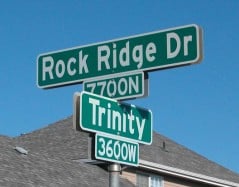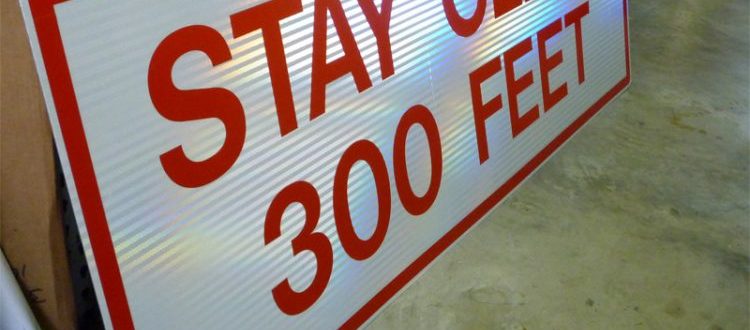As you drive down the various roads and highways, you’d certainly be lost frequently, especially at night, if you didn’t have reflective traffic signs.
Back when I was a young man in my early 20’s, I spent a few winters in the Southern U.S. and was amazed at the lack of such signposts! Even more, I was amazed at how people knew how to get around without them.
One conversation I remember having with a Southern gentleman, an old-timer in Mississippi, went something like this…”ya’ll just travel yonda up Hwy. 357 and you’ll see a big old oak tree standin’ off by itself and there’s a road there. Ya’ll turn right on that road and drive ’til you see an old barn and ’bout half mile past you’ll take a left on a dirt road. Drive on that ’bout half a mile and you’ll see a brick house and just past that take another left and you should be there.”
Most of the time, by the way, we got lost. And that was back before cell phones, so when you were lost, sometimes you lost the whole day!
Reflective Road and Traffic Signs: USDOT Standard Definitions and Specs
 So, who sets the standards for these guide markers? In the US, the U.S. Department of Transportation’s Manual on Uniform Traffic Control Devices specifies not only these types to be used on certain types of roads, but also determines the designs to be used, the shapes, and what reflector values are needed for them in various areas.
So, who sets the standards for these guide markers? In the US, the U.S. Department of Transportation’s Manual on Uniform Traffic Control Devices specifies not only these types to be used on certain types of roads, but also determines the designs to be used, the shapes, and what reflector values are needed for them in various areas.
The MUTCD has over 600 various designs within its covers (although I prefer the PDF version as it’s much lighter and is always as near as my computer!). Currently the 2009 edition has been adopted by 12 of the 50 states, so some latitude is given individual states as to when to adopt the standards for these signs, although by January 15, 2012, all the states are required to adopt the standard or have equivalent state standards in their state.
As an example of MUTCD standards in a residential zone or school zone, “Slow Children” markers are required to have a highly reflective “diamond grade” sheeting laminated because of the over-riding concern for the safety of our children.
General Guidelines from the MUTCD Manual for Materials Used
Thickness
There are varying thicknesses of aluminum material available for reflective traffic signs in the US, but the most common thicknesses used are .080″ thickness, .100″ thickness, and .125″ thickness aluminum. Depending on the size and local environmental conditions, it is often left up to a local inspector as to what thickness of material will be used. A 48″ Stop signage, for instance, may be .100″ or .125″ if specified by an individual contract, whereas a 24″ one likely would be specified at .080″ in most instances.
On very large freeway signs, you probably won’t see it, but many states specify extruded aluminum sign panels locked together because of the size and wind load. Alternately, many states simply require a strong framework behind the metal panel of these reflective road signs. You’ll need to check with the DOT in your state to learn which type is specified for your project.
The Type of Metal
The MUTCD also specifies what types of metal can be used in the construction…one common types is 5052-H38 aluminum. This specifies the purity and hardness of the metal. It also specifies that the aluminum be either alodized or anodized to keep it from corroding.
Category Specification
The MUTCD also specifies categories by a letter/number code, such as the S1-1 which would designate a School Zone or the R1-1 which designates a Stop sign. There are also Guide signs which start with D, E, I, or M, Regulatory signs which start with R, school zone signs that start with S, and Warning signs that start with a W. Not an exhaustive list, by the way, and not entirely accurate, but you get the idea about how they are organized in the MUTCD.
Military bases often use many reflective traffic signs that generally conform to MUTCD standards as well, but are not required to.
In the next article, I’ll discuss some variations that have come around in the past 20-30 years, as well as some tips on signposts that can be used if approved by the DOT or in private communities as well. You can check this to have a view of the common ones as approved by the DOT.
Good Read! Can I get a quote NOW!?
Popular Posts:




